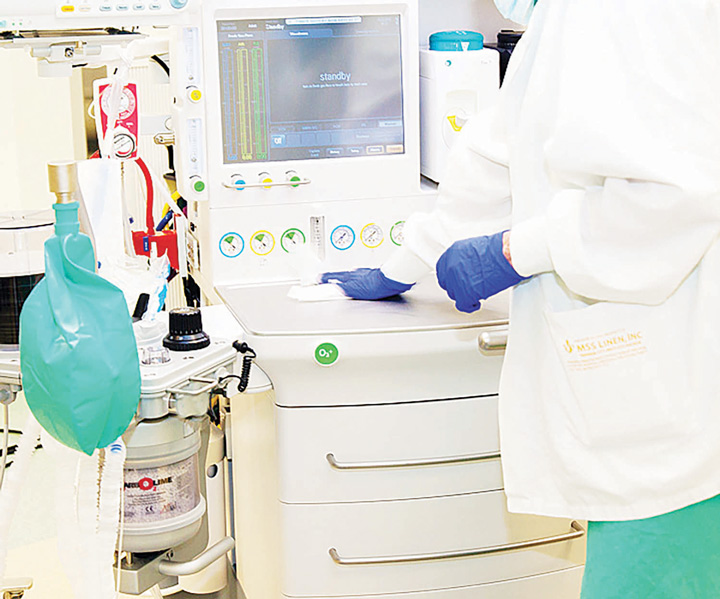Communication Is Key for All Situations
As the leader, you may need to communicate bad news to your team as changes or situations occur....
This website uses cookies. to enhance your browsing experience, serve personalized ads or content, and analyze our traffic. By clicking “Accept & Close”, you consent to our use of cookies. Read our Privacy Policy to learn more.
By: Pam Falk, MPH, CIC, FSHEA, FAPIC
Published: 5/9/2023
One thing that the COVID-19 pandemic did was put infection preventionists (IPs) front and center. Prior to the pandemic, I used to tell people I was an epidemiologist and people would look at me quizzically.
People are much more aware of us now, but unlike the inpatient world where infection preventionists have access to online training, competency skills lists and general standardization, outpatient IP leaders are often forced to work on the fly. Here are the essential elements of the job and what outpatient infection preventionists need to be successful.
An infection preventionist’s role at an ASC is a little different than at an inpatient hospital, in that the role is often more observational. In this position, you must physically get into the operating rooms and the sterile processing areas to see what is going on because you need to make sure that people are following the protocols that are identified. In the inpatient world, a lot of the IP’s practice time is spent doing surveillance, which means they follow patients who may develop many infections, including pneumonia, blood stream infections, surgical site infections (SSIs) or urinary tract infections. Outpatient IPs do follow SSIs, but a lot of their practice is process-oriented, such as assuring the surgical prep was done correctly, the antibiotics were given in a timely manner and the instruments were sterilized according to correct protocol.
But that doesn’t mean that infection preventionists in the ASC world don’t need or require training and competency skills that their inpatient peers often receive. ASC training may also be a bit more difficult to find. Allow your infection preventionist to get the necessary education to succeed in their role, and to develop a system of networking. There are a lot of great references out there that you can tap into, such as the Association for Professionals in Infection Control and Epidemiology (APIC) and the Association of periOperative Registered Nurses (AORN). Let your infection staff go to meetings and let them belong to a professional society.
APIC offers an Outpatient Infection Prevention course, which is a module to help providers learn how to be an outpatient infection preventionist. The module covers around 20 different very tangible aspects of the job. Something that I find a lot of people do not understand is how to properly assess a peel pack; it needs to be sealed properly and it needs to have a chemical indicator inside of it that’s labeled appropriately. In a skills lab, I might give somebody a peel pack and ask them, “What is wrong with this picture?”
Another aspect of the job that I like to touch on is the proper handling of surgical instrument caskets. These caskets have little vents in them that also house a paper filter. Those vents should not rock; the air should go through the paper vents. Caskets get damaged every so often, so you need to know how to spot this problem.
Unlike the inpatient world where infection preventionists have access to online training, competency skills lists and general standardization, outpatient IP leaders are often forced to work on the fly.

A major challenge I see at many ASCs is getting everybody on the same page. People in sterile processing need to know how to clean and sterilize the instruments, but often people want to take shortcuts that can result in patient infection and harm. Instituting standardized processes will help prevent staff from taking these shortcuts or thinking they have a better way of doing things. As the infection preventionist, it is your job to understand the instructions for use (IFU) for everything that needs to be cleaned, disinfected and sterilized, and to make sure the staff understands them as well.
All accreditation agencies require you to have somebody identified as your infection preventionist at your facility. At many smaller ASCs, the quality educator or nurse manager may also need to wear the infection preventionist hat. The problem with this is that they do not all need to be certified in infection prevention.
Even though you have somebody on your staff who has that title, it doesn’t necessarily mean they have any formal training on infection prevention. Give them access to continuing education because infection prevention changes so much. You want your infection preventionist to be prepared and confident when an accreditation agency comes in and asks them the infection prevention issues with a particular piece of equipment, like an autoclave or new ventilator.
The role of an infection preventionist is an important one and a big responsibility. Whoever tackles this job should feel prepared and capable to help keep the facility, its staff and its patients safe. OSM
As the leader, you may need to communicate bad news to your team as changes or situations occur....
ASC leaders face many challenges in 2025 and increasing revenues will certainly be one of them....
In a modern workplace where change often comes quickly and relentlessly, a leader should embody the concept of learning to embrace an agile mindset....